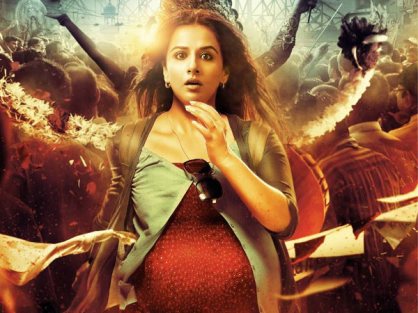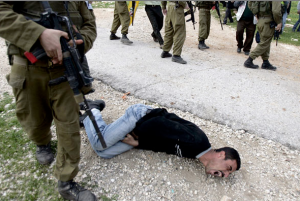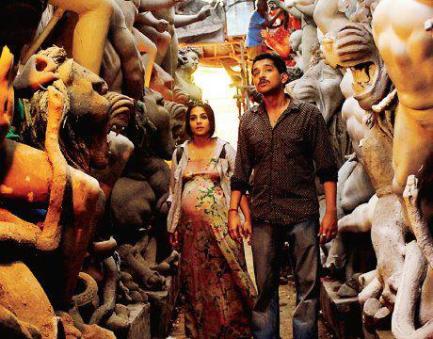
I shall now try to prove that terror and hate against perceived terrorists sell much better than sex. It does it both in the real world and in the make-believe world of “entertainment.”
In fact, I would argue that in post-9/11 copy America and clone India, sex is condom’ed up and commonplace, and therefore boring (like, it’s so predictable!). On the other hand, terror is like unsafe sex and thus unpredictable and more “fun.” Terror and terrorism is dangerous, scary and highly ticklish. In fact, it’s a hair-raising, high ‘rousing experience.
That is, if you are a president, or into media and film making. That is, if you know how to get political profit or plain, oldfashioned money profit out of terror.
I shall write briefly here about a new Indian movie named “Kahaani.” But before that, I want to talk about President Jimmy Carter, the 39th president of the United States.
Carter wrote a scathing op-ed in the New York Times today, June 26, 2012. He wrote:
“The United States is abandoning its role as the global champion of human rights.”
He went on:
“Revelations that top officials are targeting people to be assassinated abroad, including American citizens, are only the most recent, disturbing proof of how far our nation’s violation of human rights has extended. This development began after the terrorist attacks of Sept. 11, 2001, and has been sanctioned and escalated by bipartisan executive and legislative actions, without dissent from the general public. As a result, our country can no longer speak with moral authority on these critical issues.”

One final segment I want to quote from the Carter column:
“While the country has made mistakes in the past, the widespread abuse of human rights over the last decade has been a dramatic change from the past. With leadership from the United States, the Universal Declaration of Human Rights was adopted in 1948 as “the foundation of freedom, justice and peace in the world.” This was a bold and clear commitment that power would no longer serve as a cover to oppress or injure people, and it established equal rights of all people to life, liberty, security of person, equal protection of the law and freedom from torture, arbitrary detention or forced exile.
The declaration has been invoked by human rights activists and the international community to replace most of the world’s dictatorships with democracies and to promote the rule of law in domestic and global affairs. It is disturbing that, instead of strengthening these principles, our government’s counterterrorism policies are now clearly violating at least 10 of the declaration’s 30 articles, including the prohibition against “cruel, inhuman or degrading treatment or punishment.” “
You can read the entire Carter op-ed here: http://www.nytimes.com/2012/06/25/opinion/americas-shameful-human-rights-record.html?src=me&ref=general .

So, President Jimmy Carter is talking about America’s so-called War on Terror, and blasting the U.S. administration — the current Obama administration — for its extra-judicial killings and tortures worldwide. He is drawing particular attention to the numerous, lethal U.S. drone attacks in Pakistan and the indefinite detentions and physical and mental tortures at the Guantanamo Bay prison camp.
Now, what does it have to do with the Indian flick “Kahaani?”
Here’s a gist for the movie. Kahaani — in Hindi it means a story — talks about a terror attack in my birthplace Calcutta (Kolkata) where an evil terrorist has used a toxic gas on the subway train to kill hundreds of innocent people (Heavens forbid!), and disappeared. Indian secret service has failed to hunt him down. A young, pregnant woman lost her husband in that attack, and in a fascinating, clandestine, personal jihad (forgive my word choice here), comes to the city from London, befriends, uses and exploits India’s hostile police force and cruel secret service, and finally finds and captures the primary terrorist and kills him in broad daylight. Then she disappears too.
Turns out a number of high-level secret service officers were involved in the terrorist attack who also hired a contract killer later to silence anybody investigating the case. The contract killer indiscriminately kills any help to this poor woman; the woman on the other hand finds her own way to kill or have killed all the terrorists and their accomplices.
Kahaani is a new sensation in India — a super hit!
My question is this: if the U.S. government can justify its extra-judicial killings of perceived terrorists, with no regard for the 1948 international human rights laws President Carter talks about, and in particular, if it can use its self-styled, post-9/11 War on Terror as the justification for the killings, then why would India and the people at the seat of power not use the same justification to kill its perceived terrorists indiscriminately, without any regard for the laws and any due judicial process?
Sure, one is real life and the other is just “fun and entertainment,” but what about the enormous influence this hugely popular entertainment has had on young Indian minds? Or, am I talking rubbish? Okay, ask Center for Constitutional Rights lawyers. (Or, Amnesty, ACLU, HRW, etc.).
In Kahaani, the woman (who pulled the biggest surprise at the end of the movie — which I would not divulge just to give some credit for the director, actors and the cinematography and of course, my city of Calcutta) absolutely vanquished the main terrorist, took his gun away and had him in a position of total surrender; yet, she pumped five extra bullets in to kill him when she could easily have handed him over to the police force chasing after them and were just ’round the corner.
Personal jihad — didn’t I use the term before? Like, go for it, girl! (I have a feeling she — Vidya Balan — would get the best actress award this year for the role she played.)
In the movie poster, she is actually likened with the Hindu Goddess Durga who in a holy armed battle, vanquishes the demon. Some critics have likened the woman in the movie as a new symbol of Indian feminism. Why not? Anything goes! Anything sells!

See, I could’ve talked about the graphic nature of violence, and the new fab kid of Indian movie the gun (NRA would be ecstatic only if they believed in globalization!), in a typical movie review. In fact, someone must talk about the horrific justification of broad daylight killings and validation of semi-automatic guns — and that too — in a progressive city of Calcutta where even today, the average person resists violence and extrajudicial killings: they’ve seen enough!). I could’ve talked about the disturbing, terrifying imitation of Dirty Harry and Taxi Driver type blood-splattering violence used in the movie. In fact, someone should do it.
But I’m really emphasizing on the extra-judicial killing aspect that was used so abundantly in the film, mainly because to my knowledge, nobody has challenged it from that point of view. Indian movie industry has recently made a number of such films where judicial due process has been actively and purposefully ignored and excluded from people’s minds. And all these movies used terror and terrorism as the premise and justification for the extra-judicial killings. See A Wednesday. It’s just one example.
All of these movies and their directors and stars became overnight sensation. All these movies made huge box-office hits. The producers made millions.
The U.S. self-styled War on Terror is now copied and followed with every sincerity in a country like India. Indians have now accepted McDonald’s, KFC and Pizza Hut with religious devotion. They’ve accepted Monsanto and Union Carbide. They’ve accepted Wal-Mart and GE. They’ve surrendered to IMF with complete unquestioning — the Indian way.
They’ve now also accepted the principles and practices of U.S. War on Terror, where the state and its contract officers are instructed and allowed to torture and kill any perceived terrorists — no questions asked. You believe he is a terrorist? Okay, go finish him, now!
President Carter perhaps doesn’t know much about “Kahaani.” I’d strongly recommend that he watch it.
If he did, he’d know that in today’s India, terror sells better than sex. Just like in today’s U.S., terror sells better than anything else — especially in an election year.
That’s the ultimate writhing, moaning, panting-pleasure climax.
Sincerely Writing,
Partha
Brooklyn, New York

I’ve thought the same thing. Starting from preemptive attacks on other countries. It is only a matter of time before other countries will see nothing wrong with doing the same thing. Using drones will be come common place, and one of these days those war drones will be flying over all of us.
Yes, Neva. It’s so scary this model is now being followed zealously in India. And they’re selling violence and killing worldwide. India is an easy prey: Indians do not question.
1. I am not sure that US is ahead in selling sex. Indians had lonf solde sex in various packaging along with temples, religions, knowledge (Kamasutra), dance, music, poetry and novels.
2. Hit movies like kahani are released almost at the rate of two a month in India currently for elitist entertainment. These films justify nothing – they cater to the market for snnobish fashion among intellectuals in India who shift from one issue to the other as they do jnot have the capability to deeply think through any one issue for long.
3. Indians wish they had drone like things to save themslves from those who want to reach God by killing Indians – if some others have them and use to destroy those who want to kill others including Indians who are unable to enjoy the security cover of people resident in India, they do not bother what Carter or Obama says. Thos who do not live in countries like India so weak in protecting the countrymen from terrorists will not understand what terrorism means to people in India. 100 of Indians languish in Pakistan jails for decades, 100 of Indian terrorists fianced and trained by foreign terrorits, are living in rougue countries with fake foreign passports with the single mission of killing Indians in India.
4. Americans are daily consuming huge quantities of Massala dosha, Mutton biriyani, sheekh kababs, and tandoori rotis in a larger number of cities than the number of Indian cities where KFC, McDonald, Pizzahut or Subway shops are available.
%. I do not know if you are talking rubbish: but it appears to me that you are taling of many things and yet not really saying anything that can be examined, debated and explored in any methodical way.
,
Thanks for your comments, as always. Whether or not I’m saying anything worthwhile: I leave that up to my readers and colleagues to examine. I only do what I can do: think, analyze and write.
Your interpretation of “Kahaani” as being influenced by the US “war on terror” is interesting, but I would like to add something: The idea of bloody vengeance by avoiding laws and police is much older in Indian films than the US “war on terror”. It began in the middle of the 1970’s with the “angry young man” roles of Amitabh Bachchan, and there are so many of those films that have been produced in the Hindi film industry (I have no knowledge about Indian films in other languages but, presumably, it is not so much different there). Some of the “private jihad” films I watched are: Zanjeer (1973), Sholay (1975), Deewaar (1975), Pratiggya (1975), Nagin (1976), Noorie (1979), Jyoti Bane Jwala (1980), Insaaf Ka Tarazu (1980), Naseeb (1981), Meri Aawaz Suno (1981), Shakti (1982), Andhaa Kanoon (1983), Maqsad (1984), Ankush (1985), Aakhree Raasta (1986), Hukumat (1987), Pratighaat (1987), Zakhmi Aurat (1988), Ram Lakhan (1989), Tridev (1989), Agneepath (1990), Hum (1991), Deewana (1992), Tahelka (1992), Baazigar (1993), Karan Arjun (1995), Anjaam (1995), Hulchul (1995), Trimurti (1996). Then there is a gap for some years, and new revenge films come in the early 2000’s. The heroine as female revenge goddess, as Durga or Kali, is also not new because we know her from some of the mentioned films, e. g. Pratighaat, Karan Arjun, Anjaam and Trimurti. In one female revenge film, Zakhmi Aurat, women do not do the revenge by killing but by castrating, but it is private revenge anyway.
As a lover of Indian film, I find it since long very disturbing that the movies in which “private jihad” is glorified are many more than those showing the culprits being delivered to the police. This aspect of “Kahaani” is therefore definitely not a US import but has a long tradition in Indian history of film narratives that shows its huge popularity with the audiences. In early films of the “angry young man” period, like Zanjeer, there are at least some scruples about not leaving the problem to the police, but these are soon vanquished in later films where the revenging hero has no problem to kill anybody who has done wrong to him. It is also not a good development that, after a break of some years in the late 1990’s and early 2000’s, revenge movies are having a comeback now and beat every love film by far at the box office, see e. g. violence glorifying movies like Ghajini (2008), Wanted (2009), Dabangg (2010), Bodyguard (2011), Ready (2011), the new Agneepath (2012) and the like, most of which have been the most or second most successful films of their years at the box office.
To this, one can add the many films in which policemen use violence against prisoners in an absolutely arbitrary way and against every human right, without any character in the film or among the film critics at least criticising that. In the film “Kaante” of 2002 a prisoner is beaten up by a policeman without any obvious reason, and when it turns out that he is innocent, the policeman not even apologizes to him, and nobody sees any problem in that. The film that made this inhuman anti-prisoner violence international was “Slumdog Millionaire”, and till today I do not understand why this aspect of the successful movie was never discussed, neither by Indians nor by Westerners.
My impression is that this long and intensive propaganda of private violence as the adequate reaction to any injustice is partly responsible for the culture of violence visible in today’s India.
Very true and thank you for pointing to the long-term glorification of violence and male chauvinism — especially deitified by Amitabh Bachchan and his ilks — in Indian kitsch movies. Of course, there is a parallel, progressive genre in Indian cinema — Satyajit Ray, Ritwik Ghatak, Mrinal Sen, Shyam Benegal, Ketan Mehta, Aparna Sen, et al. — but nobody even in India cares much anymore about them. Therefore, it’s even more ironic and hypocritical that after this new tragedy where a young woman was gang raped and killed in Delhi, Amitabh Bachchan and Bollywood started doing their new drama of condolences, candle light vigils and poetry reading.